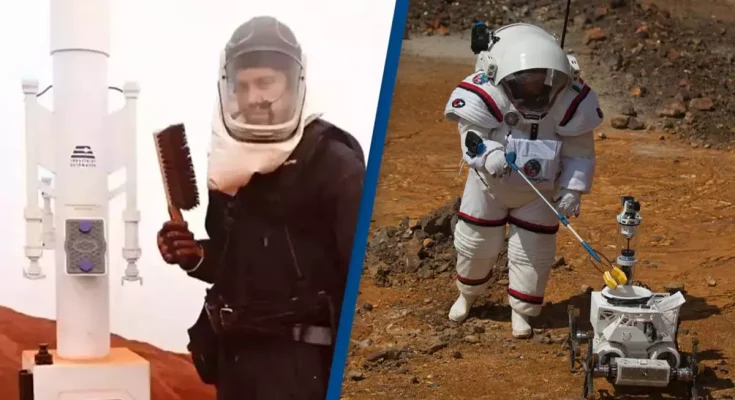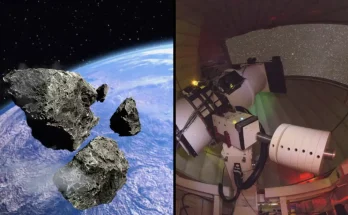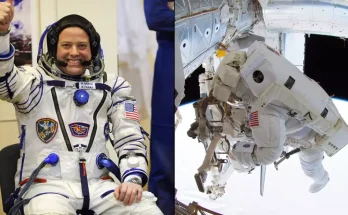The simulation began back in June last year
A NASA crew ‘living on Mars’ in simulation for the past year will return to the outside world this weekend.
While humans haven’t been back to the Moon since the last lunar mission in 1972, the boundaries of space are certainly expected.
Massive breakthroughs are coming all the time, but perhaps none more so than what NASA astronauts managed to achieve last year.
In June 2023, the CHAPEA crew embarked on a trip to Mars in a large simulated environment in Texas. There’s even an ‘exterior’ that they must don spacesuits to enter.
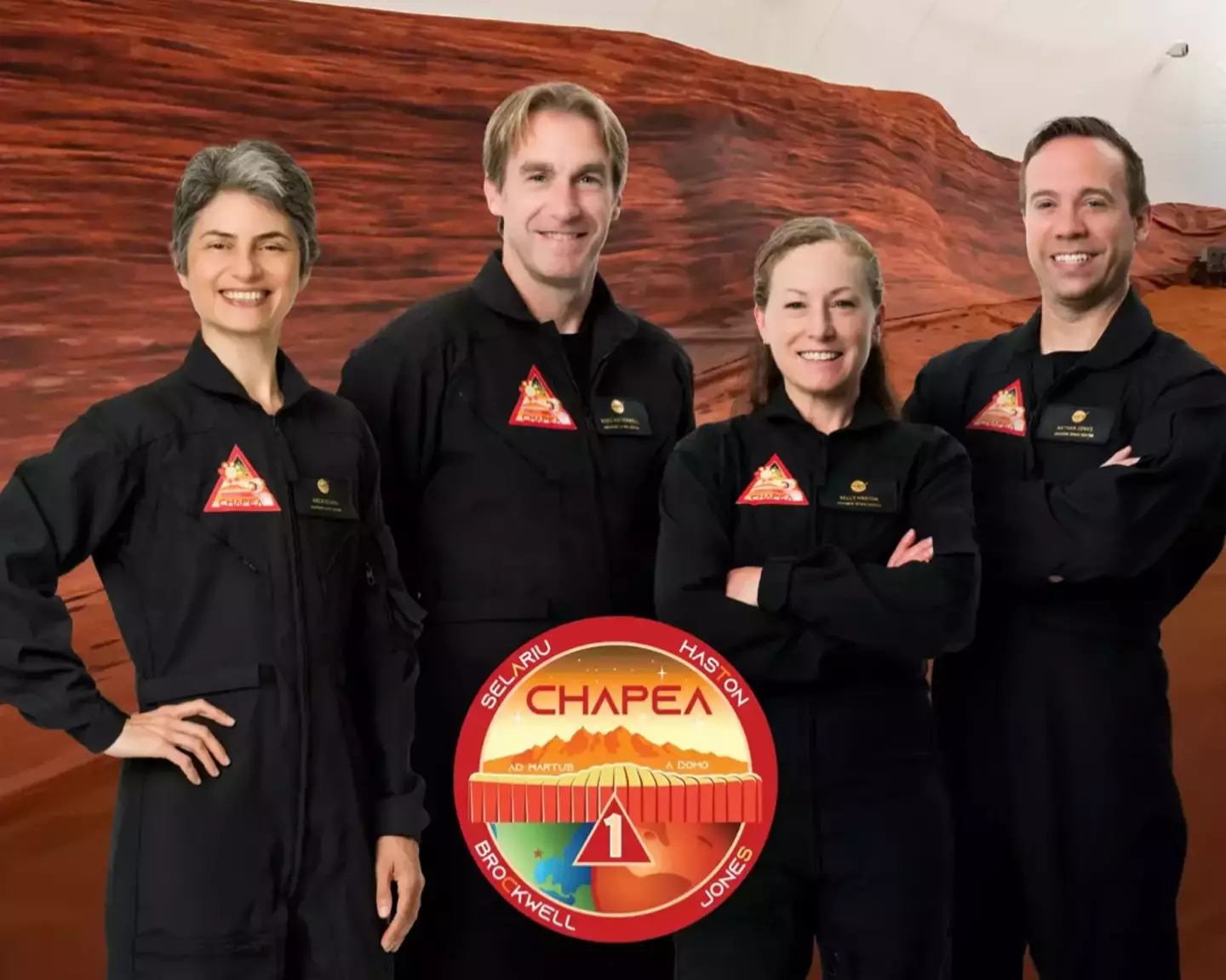
The team working on the mission. (NASA)
In a statement released at the start of the experiment, NASA said: “We’re really looking at how the crew performance and health changes based on realistic Mars restrictions and lifestyle of the crew members.
“So the lifestyle is what we’re trying to simulate by setting up a realistic environment and workload for the CHAPEA crew.”
An ‘exterior’ that the astronauts have had to wear to enter was also a thing, really showing how realistic the simulation is.
While news on their process was few and far between, an update was provided last December at the six-month mark.
That update included news on a tragic loss, which one crew member described as a ‘traumatic death’.
Thankfully, it’s not a member of the human crew, but a human robot.
Medical officer Dr. Nathan Jones said: “I may have accidentally murdered one of our robots.”
Oh, Nathan.
A big part of the hugely ambitious test was to see the effects of isolation on crew members.
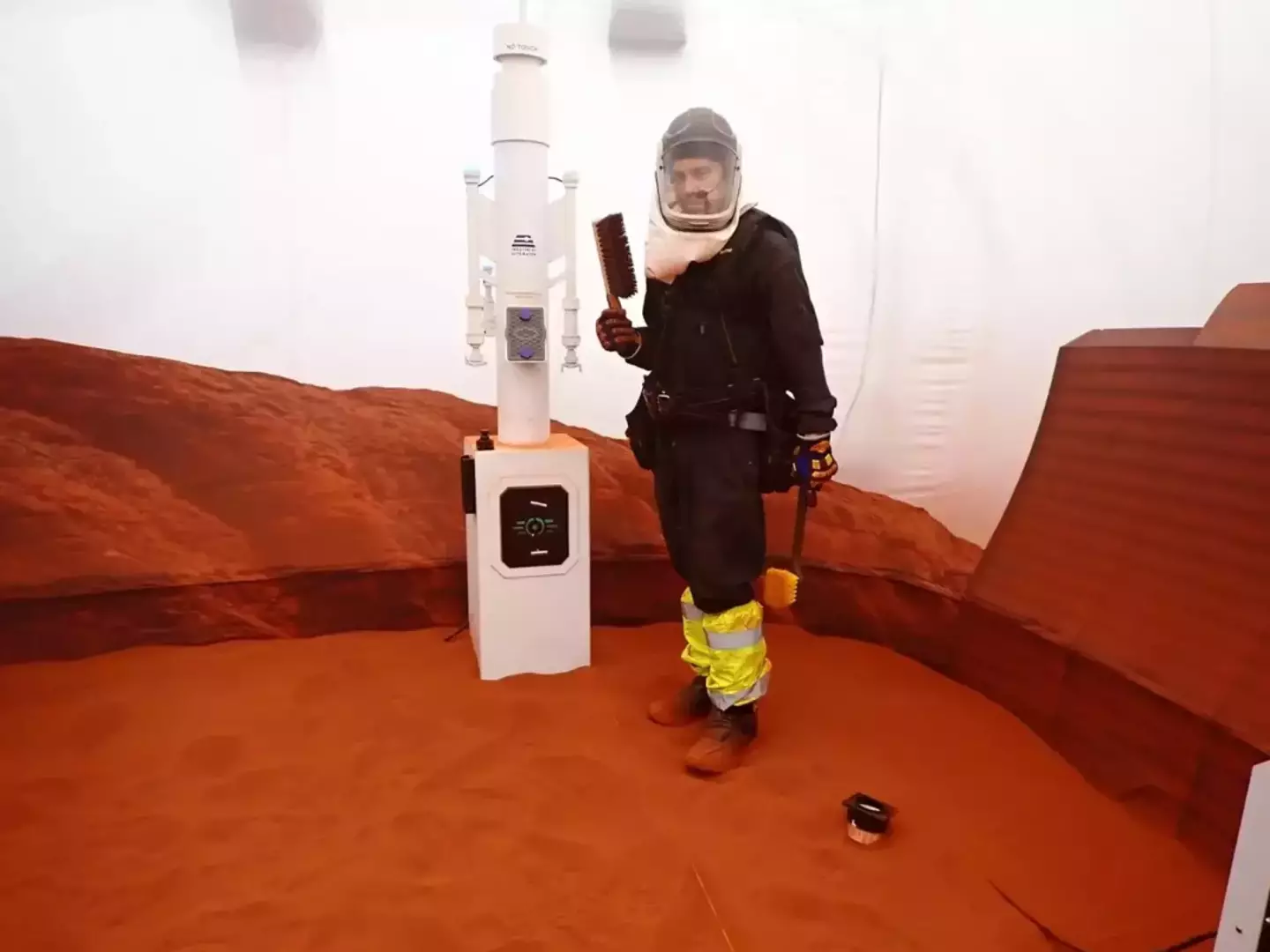
The NASA crew have been ‘living on Mars’. (NASA)
Science officer Anca Selariu said: “I really miss driving. I miss seeing trees, I miss seeing green. I miss the colors, the seasons. I miss everything about Earth.”
Over the last year, a team consisting of Dr Kelly Haston, Ross Brockwell, Dr Nathan Jones, and Dr Anca Selariu have been on simulated spacewalks, performed robotic operations, while also keeping up with regular routines they would run, such as exercising.
The experiment was to be realistic so communications with the outside world happen with at least a 20-minute delay.
The crew now have just over 24 hours until they are returned to normal civilisation, as they will leave the habitat at 5 pm EDT on Saturday (6 July).
And for those hoping to catch it, NASA will stream the crew’s exit on their website and their social media channels.
Featured Image Credit: NASA / JORGE GUERRERO/AFP via Getty Images
